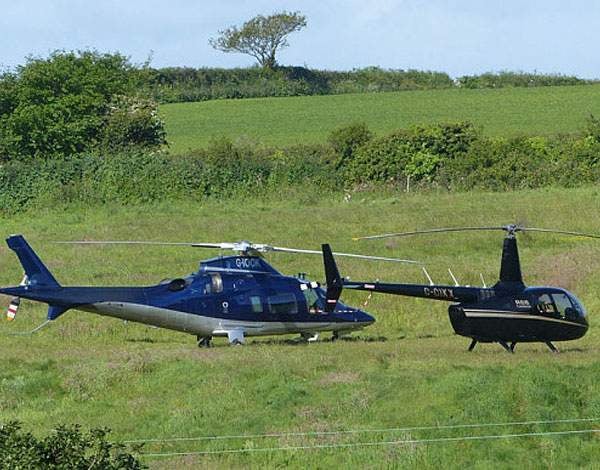
Mark Steggles looks at the issues of using helicopter landing pads – against the wishes of your neighbours

The former Formula 1 racing principle and chairman of Aston Martin, David Richards CBE, has flown into a legal battle with residents of the Cornish village of St Mawes over the use of a helicopter landing pad in Lowen Meadow to fly in friends, family and VIP guests to his two hotels.
Residents claim that the helipad, situated in a field on the outskirts of the village, is both noisy and dangerous, and are seeking a judicial review of Cornwall Council’s decision to allow Mr Richards to continue to use Lowen Meadow as a helipad – issued as a Certificate of Lawfulness of Existing Use or Development (known as a ‘CLEUD’).
Prior to obtaining the CLEUD, Mr Richards had used Lowen Meadow as a helipad under permitted developments rights, which allowed him to use the helipad for up to 28 days a year without planning permission. The residents of St Mawes maintained that Mr Richards was breaching the permitted development rights, and in the time the residents were campaigning for Cornwall Council to take action, Mr Richards managed to obtain the CLEUD.
Anyone thinking of using their own garden as a helipad may not necessarily need planning permission, provided that any development rights are not breached. Planning permission is still required for permitted development – the difference being that the application process is dispensed with, and permission is deemed to have been granted.
It is also important to check that there are no restrictive covenants affecting the land, which may be breached by helicopters landing and taking off, and additional consent may be required for listed buildings or if the property is in a town or city.
Neighbors are likely to be an obstacle. Most people faced with such noise and nuisance would want it to stop, which may involve obtaining an injunction from the court.
For them, prompt action is key. The longer matters are left, the greater the risk of the court concluding it would be unfair of the court to interfere with the way a person uses their property, due to passage of time.
In most neighbour disputes, the court has to balance the competing interests of two parties who enjoy using their properties in different ways. Factors include the location of the properties, the frequency, timing, length of the disturbances, intent (malice), and an assessment as to whether the complaining party is being overly sensitive.
Part of the council’s stated reasoning for issuing the CLEUD for Lowen Meadow was that there was no evidence produced, which contradicted that which was provided by Mr Richards concerning his use of Lowen Meadow. The Council implied in their reasoning for issuing the CLEUD that the absence of such contradictory evidence left them with no option but to issue it.
Clear and accurate record-keeping of Lowen Meadow’s use was key to Mr Richards’ success in securing the CLEUD, further proving that the importance of such diligence in any form of legal process cannot be understated.
Mark Steggles is a Partner in the Dispute Resolution Team at Thomson Snell & Passmore LLP.






